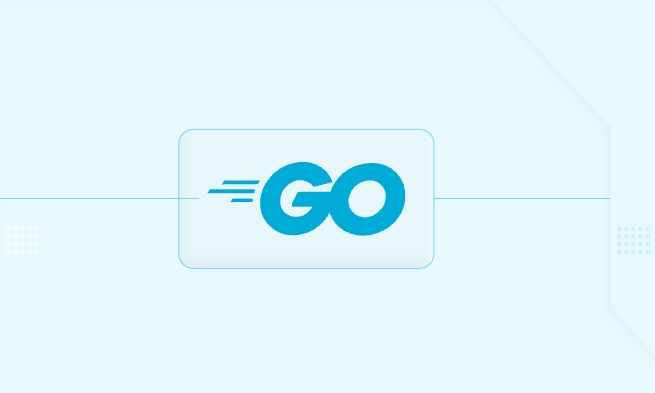How to marshal a golang struct to JSON with custom field names?
In Go, if you want the structure field to use a custom field name when converting to JSON, you can implement it through the json tag of the structure field. 1. Use the json: "custom_name" tag to specify the key name of the field in JSON. For example, Name string json: "username"" will make the Name field output as "username"; 2. Add, omitempty can control the omitted output when the field is empty. For example, Email string json: "email,omitempty"" will not display the field when the Email is an empty string. Note that the "empty" judgment criteria for pointer type and numeric type are different; 3. For nested structures or anonymous fields, you can also use json tags to name it, such as structure field Address json:"address_info``` will output the content of the Address with "address_info" as the key, and the anonymous field can also be renamed through the tag. These methods cover most of the requirements of JSON serialization scenarios.

In Go, if you want the structure field to be converted to JSON, you only need to specify it using the json tag in the structure tag. This method is simple and direct, but there are several details that need attention.

Custom field names using json tag
Go's standard library encoding/json will automatically read the field's json tag when serializing the structure to determine the output key name. For example:

type User struct {
Name string `json:"username"`
Age int `json:"user_age"`
} In the example above, Name field will be named "username" when outputting JSON, and Age will be named "user_age" .
If you do not set the json tag, then by default, the JSON key name is the structure field name and is in lowercase the initial letter. For example, if the field is named Email , then the JSON output is "email" .

Control whether to omit empty value
Sometimes you may want certain fields not to be displayed in JSON when they are empty (such as empty strings, 0, nil, etc.). At this time, you can add ,omitempty to the json tag:
type User struct {
Name string `json:"username,omitempty"`
Email string `json:"email,omitempty"`
} This way, if Email is an empty string, it will not appear in the final JSON result.
Pay attention to the following points:
- If the field type is a pointer,
omitemptyis also supported. - For numeric types (such as
int), a value of0will also be ignored by omitempty, so be careful. - The criteria for "empty" judgment of different data types are slightly different, and it is necessary to judge whether it is applicable based on the actual situation.
Handle nested structures and anonymous fields
If your structure contains other structures or anonymous fields, you can also control the output field name through the tag.
For example:
type Address struct {
City string `json:"city"`
Zip string `json:"zip_code"`
}
type User struct {
Name string `json:"username"`
Address `json:"address_info"`
} In this example, the JSON name corresponding to Addr field is address_info , and the output effect is as follows:
{
"username": "tom",
"address_info": {
"city": "Shanghai",
"zip_code": "200000"
}
} If it is an anonymous structure field, the field name will be promoted to the outer structure by default. If you want to rename this embedded field, you can also use the json tag to specify the name.
summary
Basically that's it. Just remember a few key points: use json tags to customize the field name, combine omitempty to control the null value output, and pay attention to the handling of nested structures. These techniques can cover most of the needs in real scenarios.
The above is the detailed content of How to marshal a golang struct to JSON with custom field names?. For more information, please follow other related articles on the PHP Chinese website!

Hot AI Tools

Undress AI Tool
Undress images for free

Undresser.AI Undress
AI-powered app for creating realistic nude photos

AI Clothes Remover
Online AI tool for removing clothes from photos.

Clothoff.io
AI clothes remover

Video Face Swap
Swap faces in any video effortlessly with our completely free AI face swap tool!

Hot Article

Hot Tools

Notepad++7.3.1
Easy-to-use and free code editor

SublimeText3 Chinese version
Chinese version, very easy to use

Zend Studio 13.0.1
Powerful PHP integrated development environment

Dreamweaver CS6
Visual web development tools

SublimeText3 Mac version
God-level code editing software (SublimeText3)

Hot Topics
 1796
1796
 16
16
 1746
1746
 56
56
 1593
1593
 29
29
 1475
1475
 72
72
 267
267
 587
587
 Strategies for Integrating Golang Services with Existing Python Infrastructure
Jul 02, 2025 pm 04:39 PM
Strategies for Integrating Golang Services with Existing Python Infrastructure
Jul 02, 2025 pm 04:39 PM
TointegrateGolangserviceswithexistingPythoninfrastructure,useRESTAPIsorgRPCforinter-servicecommunication,allowingGoandPythonappstointeractseamlesslythroughstandardizedprotocols.1.UseRESTAPIs(viaframeworkslikeGininGoandFlaskinPython)orgRPC(withProtoco
 Understanding the Performance Differences Between Golang and Python for Web APIs
Jul 03, 2025 am 02:40 AM
Understanding the Performance Differences Between Golang and Python for Web APIs
Jul 03, 2025 am 02:40 AM
Golangofferssuperiorperformance,nativeconcurrencyviagoroutines,andefficientresourceusage,makingitidealforhigh-traffic,low-latencyAPIs;2.Python,whileslowerduetointerpretationandtheGIL,provideseasierdevelopment,arichecosystem,andisbettersuitedforI/O-bo
 Is golang frontend or backend
Jul 08, 2025 am 01:44 AM
Is golang frontend or backend
Jul 08, 2025 am 01:44 AM
Golang is mainly used for back-end development, but it can also play an indirect role in the front-end field. Its design goals focus on high-performance, concurrent processing and system-level programming, and are suitable for building back-end applications such as API servers, microservices, distributed systems, database operations and CLI tools. Although Golang is not the mainstream language for web front-end, it can be compiled into JavaScript through GopherJS, run on WebAssembly through TinyGo, or generate HTML pages with a template engine to participate in front-end development. However, modern front-end development still needs to rely on JavaScript/TypeScript and its ecosystem. Therefore, Golang is more suitable for the technology stack selection with high-performance backend as the core.
 How to completely and cleanly uninstall Golang from my system?
Jun 30, 2025 am 01:58 AM
How to completely and cleanly uninstall Golang from my system?
Jun 30, 2025 am 01:58 AM
TocompletelyuninstallGolang,firstdeterminehowitwasinstalled(packagemanager,binary,source,etc.),thenremoveGobinariesanddirectories,cleanupenvironmentvariables,anddeleterelatedtoolsandcaches.Beginbycheckinginstallationmethod:commonmethodsincludepackage
 How to marshal a golang struct to JSON with custom field names?
Jun 30, 2025 am 01:59 AM
How to marshal a golang struct to JSON with custom field names?
Jun 30, 2025 am 01:59 AM
In Go, if you want the structure field to use a custom field name when converting to JSON, you can implement it through the json tag of the structure field. 1. Use the json: "custom_name" tag to specify the key name of the field in JSON. For example, Namestringjson: "username"" will make the Name field output as "username"; 2. Add, omitempty can control that the output is omitted when the field is empty, such as Emailstringjson: "email,omitempty""
 How to install Go
Jul 09, 2025 am 02:37 AM
How to install Go
Jul 09, 2025 am 02:37 AM
The key to installing Go is to select the correct version, configure environment variables, and verify the installation. 1. Go to the official website to download the installation package of the corresponding system. Windows uses .msi files, macOS uses .pkg files, Linux uses .tar.gz files and unzip them to /usr/local directory; 2. Configure environment variables, edit ~/.bashrc or ~/.zshrc in Linux/macOS to add PATH and GOPATH, and Windows set PATH to Go in the system properties; 3. Use the government command to verify the installation, and run the test program hello.go to confirm that the compilation and execution are normal. PATH settings and loops throughout the process
 How to fix 'go: command not found' after installation?
Jun 30, 2025 am 01:54 AM
How to fix 'go: command not found' after installation?
Jun 30, 2025 am 01:54 AM
"Go:commandnotfound" is usually caused by incorrect configuration of environment variables; 1. Check whether Go has been installed correctly and use whichgo to confirm the path; 2. Manually add Go's bin directory (such as /usr/local/go/bin) to the PATH environment variable; 3. Modify the corresponding shell's configuration file (such as .bashrc or .zshrc) and execute source to make the configuration take effect; 4. Optionally set GOROOT and GOPATH to avoid subsequent module problems. After completing the above steps, run government and verify whether it is repaired.
 Resource Consumption (CPU/Memory) Benchmarks for Typical Golang vs Python Web Services
Jul 03, 2025 am 02:38 AM
Resource Consumption (CPU/Memory) Benchmarks for Typical Golang vs Python Web Services
Jul 03, 2025 am 02:38 AM
Golang usually consumes less CPU and memory than Python when building web services. 1. Golang's goroutine model is efficient in scheduling, has strong concurrent request processing capabilities, and has lower CPU usage; 2. Go is compiled into native code, does not rely on virtual machines during runtime, and has smaller memory usage; 3. Python has greater CPU and memory overhead in concurrent scenarios due to GIL and interpretation execution mechanism; 4. Although Python has high development efficiency and rich ecosystem, it consumes a high resource, which is suitable for scenarios with low concurrency requirements.





